

Story
차세대 원전 기술은
미래 에너지의 ‘게임체인저’
Next-generation Nuclear Power Technology Is
the 'Game Changer' of Energy in the Future
한양에너지환경연구원 미래원자력혁신기술센터장 김성중 교수(원자력공학과)
Professor Sung Joong Kim (Department of Nuclear Engineering),
Director of the Future Nuclear Innovation Technology Center at the Hanyang Institute of Energy and Environment (HY-IEE)
- 글 박영임
- 사진 이현구
- Writing Park Yeong-im
- Photograph Lee Hyeon-gu
Scroll Down
The status of nuclear power has risen due to carbon neutrality and the major shift towards artificial intelligence and digital transformation. The Hanyang Institute of Energy and Environment (HY-IEE)'s Future Nuclear Innovation Technology Center is dedicated to developing sustainable clean energy. They are committed to innovative small modular reactors (SMRs), spent nuclear fuel management technologies, and fusion power plant construction. We spoke with Professor Sung Joong Kim, the center director, about next-generation nuclear power technology, which is emerging as a future energy source.
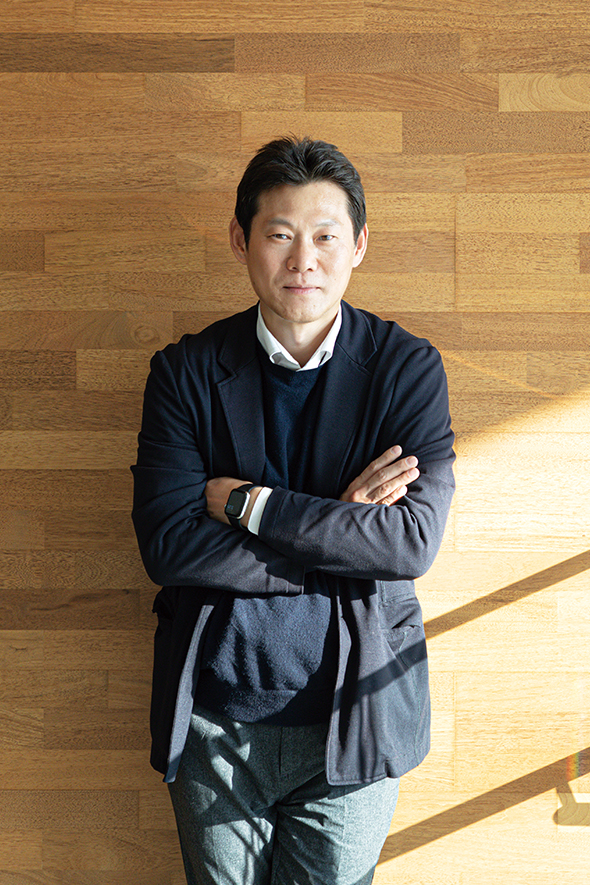
AI 시대가 촉발한 원자력에너지의 부활
지난 10월 30일 경북 울진군 신한울 원전 부지에서 ‘신한울 원전 1·2호기 종합준공 및 3·4호기 착공식’이 열렸다. 국내에서 신규 원전 건설은 2016년 새울 3·4호기 착공 이후 8년 4개월 만의 일이다. 원전의 부활은 비단 우리나라만의 일이 아니다. 탄소중립, 에너지 안보, 전기 수요 급증 등으로 전 세계적으로 원자력 발전에 대한 관심이 되살아나고 있다.
“1986년 체르노빌 원자력 발전소 사고 등으로 유럽 국가들은 원전에 가장 비판적인 자세를 보여왔습니다. 하지만 2020년 EU에서 원자력에너지를 친환경 산업으로 분류하며 인식 전환이 일어났고, AI 기술 확산으로 전력 수요가 급증하자 원전이 세계 에너지 시장에서 게임체임저가 되었습니다.”
디지털 전환과 인공지능 활성화를 위한 대규모 데이터센터 가동, 전기차 보급 등을 위해서는 우선 안정적인 전력 공급이 전제돼야 한다. 하지만 풍력, 태양광, 수소 같은 신재생에너지들은 아직 충분히 안정성을 확보하지 못한 실정이다. 그래서 가장 현실적인 대안으로 탄소를 배출하지 않으면서 효율적, 안정적으로 전기를 생산하는 원자력 발전에 다시 눈을 돌리게 된 것이다. 김성중 교수는 신재생에너지와 함께 원자력에너지를 늘려 에너지 포트폴리오를 균형감 있게 조정해야 할 때라고 강조했다.
아마존과 구글, 오픈AI가 소형모듈원자로(Small Modular Reactor, 이하 SMR) 기술 개발을 위한 투자 및 공급계약을 맺고, 마이크로소프트의 빌 게이츠가 ‘테라파워’를 세워 SMR 상용화에 박차를 가하는 등 글로벌 빅테크 기업들의 발빠른 행보는 이미 잘 알려진 사실이다. 그런데 여기서 주목할 단어가 있다. 바로 SMR이다. SMR은 대형 원전(1000~1400㎿)의 원자로와 증기발생기 등 주요 장치를 통합해 크기를 줄이고 전기 출력을 300㎿ 이하로 줄여 모듈 방식으로 빠르게 건설할 수 있을 뿐 아니라, 중대사고 확률을 10억 년에 1회 수준으로 낮춰 안전성도 극대화했다. 원전이 다시 주목받는 것은 이렇게 기존 원전 기술의 단점을 보완했기 때문이다. 그렇기에 차세대 원자력으로 불린다.
The Revival of Nuclear Energy in the AI Era
On October 30, the Shin-Hanul Nuclear Power Plant site in Uljin-gun, Gyeongsangbuk-do, hosted the completion ceremony for Units 1 and 2, alongside the groundbreaking for Units 3 and 4. The construction of new nuclear power plant construction in the country is happening for the first time in 8 years and 4 months since the start of construction of Saeul Units 3 and 4 in 2016. The resurgence of nuclear power, however, is not limited to Korea. Global interest in nuclear energy has been reignited due to the pursuit of carbon neutrality, energy security, and rising electricity demand.
“European countries were highly critical of nuclear energy following incidents like the 1986 Chernobyl disaster,” says Professor Kim. “However, in 2020, the EU reclassified nuclear power as a green industry, signaling a shift in perception. The rapid expansion of AI and the associated surge in electricity demand have further positioned nuclear energy as a game changer in the global energy market.”
A stable power supply is essential for the operation of large-scale data centers aimed at promoting digital transformation and artificial intelligence, as well as for the widespread adoption of electric vehicles. However, renewable energy sources like wind power, solar power, and hydrogen have not yet achieved sufficient stability. This has brought nuclear power back into focus as a practical alternative—one that generates carbon-free electricity efficiently and reliably. Professor Kim emphasizes the importance of balancing energy portfolios by expanding both renewable and nuclear energy capacities.
Tech giants like Amazon, Google, and OpenAI have already invested in and signed supply agreements for SMR technology. Additionally, Microsoft's Bill Gates has established “TerraPower” to accelerate the commercialization of SMRs, showcasing the swift actions of these major companies. The standout term here is small modular reactor (SMR). Unlike conventional large reactors with capacities of 1,000–1,400 MW, SMRs integrate key components such as the reactor and steam generator, reducing their size and enabling outputs of 300 MW or less. This modular design allows for rapid construction and offers unmatched safety, with the probability of a severe accident reduced to once in a billion years. The appeal of next-generation nuclear power lies in its ability to overcome the shortcomings of traditional reactors. With its enhanced safety, efficiency, and flexibility, SMR technology is rightly hailed as the next-generation nuclear power.
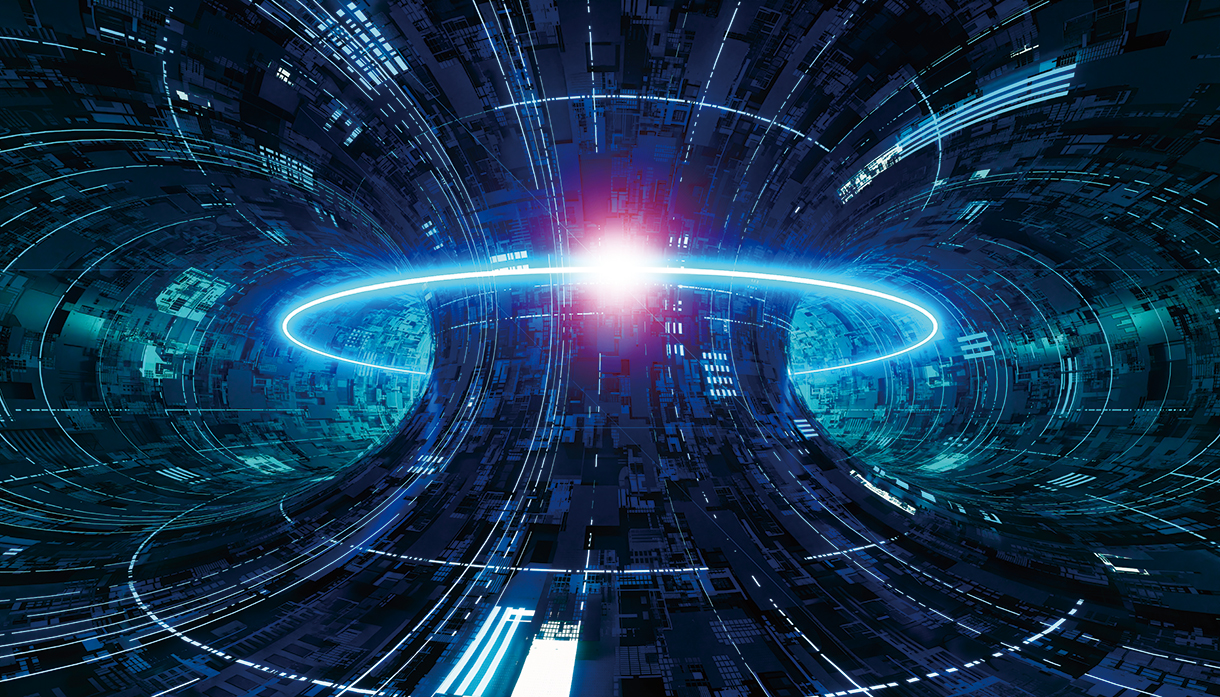
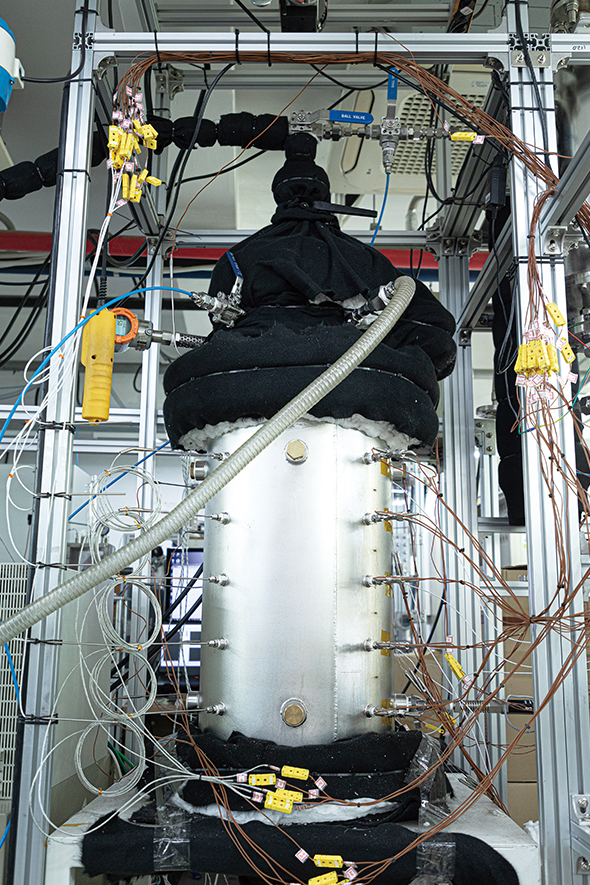
SMR 시장 선점을 위한 치열한 패권 경쟁
“원전은 그 규모와 어떤 냉각재로 운전하느냐에 따라 크게 ‘경수로형 원전’, ‘경수로형 SMR’, ‘비경수로형 SMR’로 나눌 수 있습니다. 차세대 원자력의 경우 규모는 SMR이고 냉각재는 경수로, 즉 물이 아닌 액체 냉각, 액체 금속, 고온 가스, 용융염 원자로 등을 사용한 원전까지 포괄적으로 가리키는 용어라 할 수 있습니다.”
이렇게 SMR이 미래 에너지원으로 각광받자 미국, 러시아, 중국, 일본 등 주요 국가들 간에 누가 먼저 SMR 기술 개발을 주도해 630조 원대(영국왕립원자력연구원 2035년 시장 전망) 글로벌 시장을 선점할 것인가에 대한 패권 경쟁이 치열하게 벌어지고 있다. 현재 글로벌 SMR 선두 기업으로 꼽히는 미국의 테라파워가 지난 6월 미국 와이오밍주에 SMR 실증단지 착공식을 열고 7월에는 뉴스케일파워가 루마니아 SMR 사업 기본설계 2단계 계약을 체결하긴 했으나, 아직 SMR이 실질적으로 운용된 사례는 없기 때문이다. SMR의 상용화 시기는 2028~2030년으로 전망되며, 그 후 시장이 형성돼 건설이 확산되면 규모의 경제를 이뤄 경제성도 높일 수 있다.
우리나라도 2023년부터 2028년까지 4천억 원을 투입, 한국형 SMR인 ‘혁신형 SMR(i-SMR)’을 개발하기 위해 총력을 다하고 있다. 2028년까지 표준 설계 인가를 취득하고 2035년까지 모듈 건설을 완료해 실증 가동에 들어가는 것이 목표다. 글로벌 선두 기업들에 다소 뒤처지긴 했으나 독자적인 기술력을 갖추고 있기에 승산은 충분하다.
“사실 우리나라는 2012년에 세계 최초로 SMR 표준 설계 인허를 획득한 국가였습니다. 미국, 러시아 등을 제치고 가장 먼저 착수했던 것이죠. 이런저런 문제로 건설이 무산되는 바람에 다른 나라들에 기술 주도권을 빼앗겼지만, 그럼에도 우리에게 아직 기회가 있다고 생각합니다. 혁신형 SMR을 개발하고 있으니까요.”
Fierce Competition for Dominance in the Small Modular Reactor Market
“Nuclear reactors can broadly be categorized by size and coolant type into light water reactors (LWRs), light water SMRs, and non-light water (non-LWR) SMRs. The term ‘next-generation nuclear’ generally refers to SMRs that use coolants other than water, such as liquid metal, high-temperature gas, or molten salt reactors,” explains Professor Kim.
As SMRs gain recognition as a future energy source, fierce competition is underway among major countries such as the United States, Russia, China, and Japan to take the lead in developing SMR technology and seize the global market, projected to be worth KRW 630 trillion by 2035, according to the UK Royal Nuclear Research Institute. Although leading companies like TerraPower broke ground on an SMR demonstration plant in Wyoming in June 2023 and NuScale Power signed Phase 2 design contracts for an SMR project in Romania in July, no SMRs are yet operational. Commercialization is expected between 2028 and 2030, and once construction scales up, economies of scale could enhance cost-effectiveness.
Korea, too, is fully committed to developing its own “Innovative SMR (i-SMR),” investing 400 billion KRW from 2023 to 2028. The goal is to secure standard design approval by 2028, complete modular construction by 2035, and begin demonstration operations. While South Korea lags slightly behind global leaders, it possesses the technical expertise to remain competitive in the market.
“In fact, Korea was the first in the world to obtain standard design approval for an SMR in 2012, ahead of nations like the U.S. and Russia,” says Professor Kim. “Although various issues prevented construction at the time, allowing other countries to take the lead, I believe there’s still an opportunity for us. With the development of the innovative i-SMR, we are well-positioned to regain our footing in the global market.”
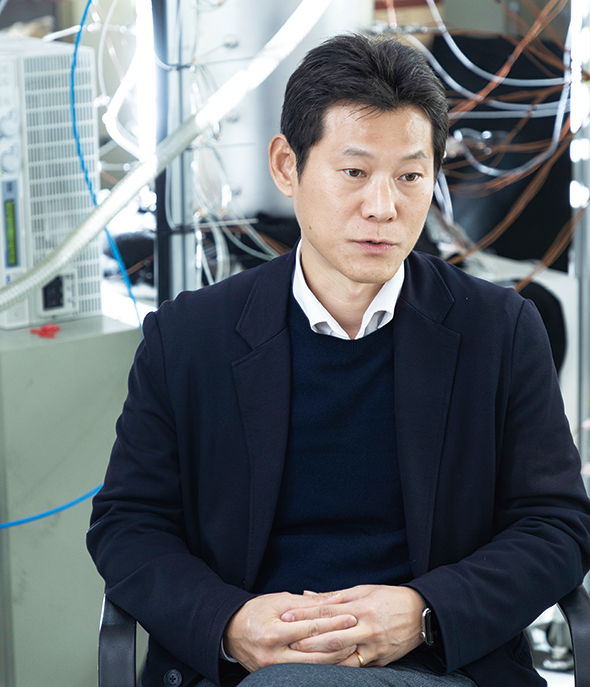
탄소중립과 에너지 안보, 전기 수요 급증 해결을 위해서는 신재생에너지와 함께 원자력에너지를 늘려 에너지 포트폴리오를 균형감 있게 조정해야 한다
To address carbon neutrality, energy security, and the soaring demand for electricity, it is essential to expand nuclear energy alongside renewable energy, ensuring a balanced energy portfolio.
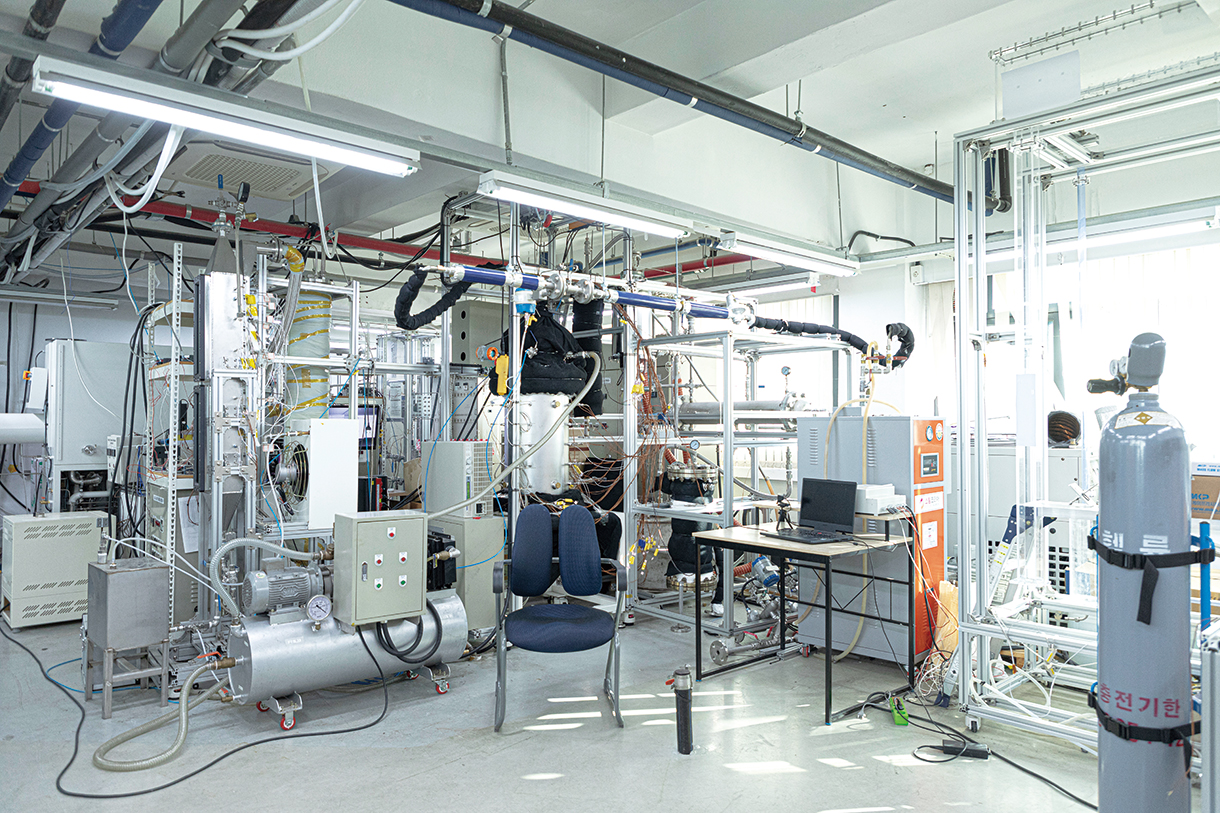
미래원자력혁신기술센터, 한양의 이름으로 원자로 개발
한양대의 에너지 및 환경 분야 융합연구 교육기관인 한양에너지환경연구원(HY-IEE)도 산하에 미래원자력혁신기술센터를 운영하고 있다. 이곳은 혁신적인 SMR 개발, 사용 후 핵연료 관리기술, 방사성 응용 및 의학물리기술, 핵융합로 기술 연구 등을 수행하고 있다. 물론 정부의 혁신형 SMR 사업에도 참여 중이다.
“현재 혁신형 SMR 피동안전계통 성능평가 기술, 방사선 영향을 평가하는 기술, 용융염 원자로 개념을 개발하는 연구 등 20억 원의 혁신형 SMR 연구 과제를 비롯해 2024년에만 150억 원 규모의 신규 연구과제를 수주했습니다. 향후 한양대의 이름을 내건 원자로가 세계 시장에 나가는 것, 탄소중립으로 깨끗한 지구를 만들어 나가는 데 일조하는 것이 미래원자력혁신기술센터의 목표죠. 그리고 이러한 꿈을 이루는 데 주도적으로 앞장설 글로벌 전문인력을 양성하는 것 또한 센터의 주요 임무입니다.”
한편, 앞서 설명한 발전용 원자력 기술뿐 아니라 비발전용 원자력 기술 개발도 전도유망한 분야다. 대표적인 사례가 청정 수소를 생산하는 데 비경수로형 원자로를 활용하는 것이다. 수소를 생산하려면 고온에서 수증기를 전기분해해야 하는데 이는 500℃ 이상의 열을 필요로 한다. 이러한 열을 제공할 수 있는 탄소 배출 없는 에너지원이 바로 원자력이다. 이뿐 아니라 화학단지, 섬유단지, 제철소 등 고온의 열을 필요로 하는 산업들도 SMR에 관심이 높다. 김성중 교수는 이렇게 비발전용 원자력도 다양한 산업 분야에 활용될 수 있어 전망이 밝은 분야라며 젊은 한양인들의 도전을 당부했다.
“한양인들의 정체성에는 성실함이 있습니다. 저는 한양인들에게 이런 성실함을 바탕으로 겁 없이 도전하라고 말하고 싶습니다. 도전 후 비록 실패한다 하더라도 그것은 다음 성공의 밑거름이 될 것입니다. 저 역시 무수히 많은 실패를 경험했습니다. 그런 실패를 통해 더욱 단단해지고 명확한 방향성을 갖게 되는 것이죠. 지적 호기심을 자극하는 분야, 자신의 성장을 끌어 낼 수 있는 분야를 찾아 도전하는 것이 본인의 성장을 독려하는 데 가장 큰 동력이 될 것입니다.”
Future Nuclear Innovation Technology Center Develops Reactor Under Hanyang's Name
The Hanyang Institute of Energy and Environment (HY-IEE), a multidisciplinary research and education institution at Hanyang University, operates the Future Nuclear Innovation Technology Center. This center is actively engaged in groundbreaking research on innovative SMR development, spent nuclear fuel management technologies, radiation applications, medical physics, and fusion reactor technologies. It is also a key participant in the government-led Innovative SMR (i-SMR) project.
“In 2024 alone, we have secured new research projects worth KRW 15 billion, including a KRW 2 billion project focused on evaluating the performance of passive safety systems in innovative SMRs, assessing the impact of radiation, and conceptualizing molten salt reactors (MSRs). Our ultimate goal is to develop reactors under the name of Hanyang University and to contribute to a cleaner planet through carbon neutrality. Additionally, we aim to lead the way in nurturing global experts who will bring this vision to life,” shared Professor Kim. Beyond power generation, non-electric applications of nuclear technology represent a promising field. A standout example is the use of non-light water reactors (Non-LWRs) to produce clean hydrogen. Hydrogen production requires high-temperature steam electrolysis, which demands temperatures exceeding 500°C. Nuclear energy, as a carbon-free energy source, is uniquely suited to provide this heat. Similarly, industries requiring high temperatures, such as chemical plants, textile factories, and steel mills, are increasingly interested in SMRs for their industrial processes. Professor Kim emphasized the potential of non-electric nuclear applications to revolutionize various industries, urging Hanyang’s students to rise to the challenge.
“Hanyang students are known for their dedication and perseverance. I want to encourage them to take bold risks, leveraging this determination. Even if their efforts result in failure, those experiences will serve as stepping stones to future success. I have faced countless failures myself, but each one strengthened my resolve and clarified my direction. By exploring fields that spark intellectual curiosity and foster personal growth, students can find the greatest motivation for their development,” he said.
